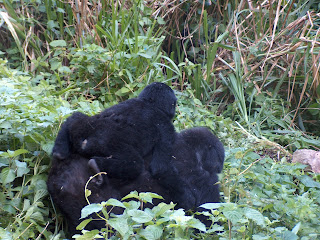 As we make our way to the end of 2010 and plough our way into the new year we are all faced with daily headlines in the press reminding us of the recession, government cuts, global warming, sustainable living, our ecological footprint, thinking about how we shop, what we buy, organic or free range? Tested on animals? Farmed or fresh? Sustainably fished or hunted to extinction? Thinking about your next move, even if it is just to buy some milk from the corner shop, we are all faced with a number of choices daily which will affect not only our future but the future of our children and future generations. What does the future hold? And can we really influence the bigger picture? And does it really matter? A review article in NewScientist October 09 edition based on the book by Robert and Brenda Vale, two architects who specialise in sustainable living at University of Wellington, New Zealand compared the ecological pawprint of everyday family pets with SUV’s otherwise known as 4x4’s or ‘Sports Utility Vehicles’. The findings were astonishing!
As we make our way to the end of 2010 and plough our way into the new year we are all faced with daily headlines in the press reminding us of the recession, government cuts, global warming, sustainable living, our ecological footprint, thinking about how we shop, what we buy, organic or free range? Tested on animals? Farmed or fresh? Sustainably fished or hunted to extinction? Thinking about your next move, even if it is just to buy some milk from the corner shop, we are all faced with a number of choices daily which will affect not only our future but the future of our children and future generations. What does the future hold? And can we really influence the bigger picture? And does it really matter? A review article in NewScientist October 09 edition based on the book by Robert and Brenda Vale, two architects who specialise in sustainable living at University of Wellington, New Zealand compared the ecological pawprint of everyday family pets with SUV’s otherwise known as 4x4’s or ‘Sports Utility Vehicles’. The findings were astonishing! They concluded that a Landcruiser’s eco-footprint is less than half that of a medium sized dog! John Barrett at the Stockholm Environment Institute in York, UK said “Owning a dog really is quite an extravagance, mainly because of the carbon footprint of meat”.

So what is it to be eco-friendly? And how do we achieve it when even our furry friends are no longer seen as being part of a sustainable future?
Well in my opinion we all hold a piece of the future in our hands, every single one of us, so every decision we make on a daily basis will in turn in one way or another affect another human/non human being sometime in the future. Therefore we can all make a difference, even if it’s in a miniscule contribution, a hundred thousand miniscule contributions soon add up! Therefore if you already own a pet, then changing its diet can help. Replacing meat with a more sustainable, less energy intensive replacement can almost halve the eco-pawprint of a dog or reducing the amount of birds a cat kills per year can drastically reduce their huge claw-print. And as for SUV drivers well you’ll be very happy to know that Land Rover have made a promise to a more sustainable future by actively supporting Conservation programs such as the Borneo Orangutan Survival Foundation (BOS) which runs the world’s largest primate rescue project. As part of their sponsorship they have donated a Defender to the Nyaru Menteng Orangutan Reintroduction Project in Central Kalimantan. The vehicle is currently being used in the most remote areas of Borneo for the transportation and return of Orangutan's to safe forests.

So its not all doom and gloom, there is always a greener alternative if we really want to make a greener choice, which made me think twice this week when I decided that the house was far too quiet and I wanted a pet…..
So I’ve decided on 3 bantam hens! At least they compensate for their eco-featherprint by providing eggs although I’m not sure I’m ready to go all the way and be completely eco-friendly by eating them, they’re never going to provide as much entertainment and pleasure on the dinner plate as seeing them pottering around the garden chattering away to each other.
Have a great week.
Nic




.jpg)














.jpg)
.jpg)